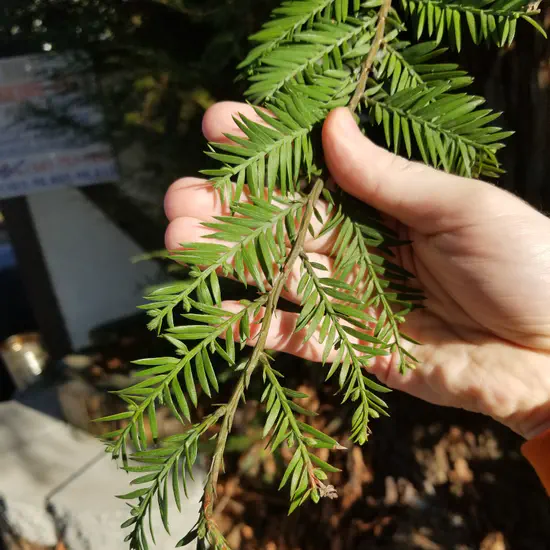What?#
Giants of Corvallis is an interactive map of spaces in Corvallis where the largest tree species in the world grow. Thanks for checking out the page!
This is a project to document coast redwoods and giant sequoias (Sequoia sempervirens and Sequoiadendron giganteum) growing in Corvallis. It is an ongoing attempt to catalogue the locations of these trees, record images, and document their histories. The project is largely a personal undertaking, but community engagement and feedback is highly appreciated. The goal is for the map to provide a complete, living record of these exceptional trees in Corvallis.
Why?#
As a transplant from the East Coast, I’m fascinated by the old-growth forests of the PNW. Visiting Redwoods National Park filled me with reverence and is one of my favorite memories.
However, it’s surprisingly easy to overlook details in the spaces where you live and work, and it took me a long time to realize there were redwoods on the streets that I walk every day. Many giant trees have been grown in both public and private spaces around town! Once I noticed a few, I couldn’t stop seeking them out. Documenting them in this way fascinates me for a few reasons:
- Mindfulness: Engaging your senses while walking around town is a great way to practice mindfulness. Trying to identify trees (or birds, or sounds, etc) during a walk, rather than getting lost in worries about the day ahead or a conversation from yesterday, is a great way to stay in a positive headspace. I’ve found this habit helpful for my mental health, and I hope it can be for others too.
- Naturalism: Remembering our scale in relationship to the processes of nature is humbling and important. Becoming more aware of the organisms that make up the environments we walk through every day is an important piece of conservationism.
- Community: Trees that grow this large and this old are rarely planted on accident. They often have associated histories reflecting the ideals of those who have planted them, and through their lives, they likely affect others. Recognizing and recording this draws attention to the shared experiences of Corvallis' community, and can preserve stories that may be otherwise forgotten.
- Why Not? These trees are cool, and I want to see how many are here :)
How?#
I am an amateur naturalist (at best) and don’t have this process down to a science.
To identify trees for this map, the first step is to look. On car and bike rides, I pay attention to trees that might be redwoods or sequoias, and note the streets when I can. Later, I walk or bike to these spots specifically, and get close enough to assess the foliage and bark of the trees. The most common false positive is the western redcedar (Thuja plicata), which grows tall, straight, and has ridged bark like a coast redwood. However, its foliage is completely different, which is obvious on closer inspection. I then take pictures and manually add my findings to the map file.
To learn about the trees once identified, I search the internet, check archived local news, and when possible, reach out to community members. This process is slow and inexact, and I don’t yet have as much information as I’d like. I like to learn about how old each tree is, whether it was planted for a purpose and by whom, and any stories from its life.
Eventually, I may start measuring the height of trees around town using a surveyor’s wheel and my phone as an amateur clinometer. I’ll likely start with the tallest trees.
Tech: the map itself is maintained on Google My Maps. (Google Earth was cooler, but doesn’t support embedding.) This webpage is written by me using the Paige theme, compiled in Hugo, and hosted on Firebase.
You can help!#
If you read this far, you must be fairly interested. I’d love to get feedback from others, so check out the Contact page!

